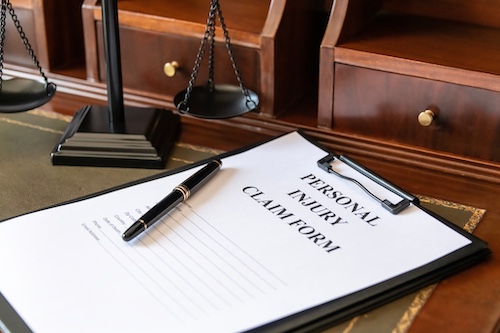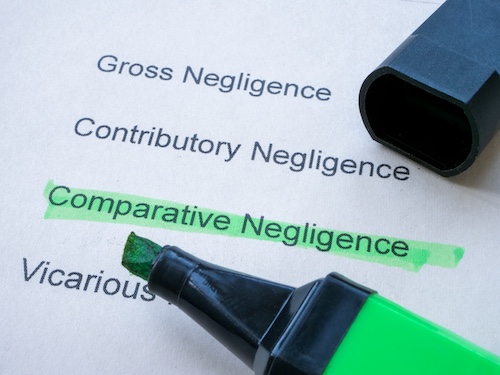Comparative Negligence Laws in South Carolina
At McDougall Law Firm, we stand for injured clients in Beaufort and across South Carolina. We fight to recover compensation for medical bills, lost wages, and pain and suffering when someone else’s negligence causes harm. Our team serves clients on a “no win, no fee” basis, so you owe us nothing unless we succeed. We bring deep experience in personal injury, car accidents, premises liability, medical malpractice, and more.
Understanding comparative negligence laws in South Carolina is essential for anyone involved in an accident where more than one person shares fault. These laws decide how responsibility is divided and how much compensation an injured person can receive. South Carolina follows a modified comparative negligence system, meaning you can still recover damages even if you are partly responsible, as long as your share of fault does not exceed 50 percent.
With the guidance of an experienced Beaufort personal injury lawyer, accident victims can protect their rights, prove the other party’s negligence, and pursue fair compensation under state law.
Basic Concepts: Negligence, Fault, and Damage Recovery
Understanding how comparative negligence laws work in South Carolina starts with knowing the basic principles of negligence, fault, and how damages are recovered in a personal injury claim.
What Is Negligence
Negligence occurs when a person or party fails to exercise reasonable care, resulting in harm to another. In South Carolina, this principle applies to most personal injury claims, including car accidents, slip-and-fall incidents, and workplace injuries. To prove negligence, an injured party must show four elements: duty, breach, causation, and damages. Each element helps courts and insurance companies determine whether the defendant’s negligence caused the harm.
How Fault Is Assigned
When two parties share responsibility for an accident, South Carolina courts assign a percentage of fault to each. This percentage reflects how much each person contributed to the incident. The plaintiff can still recover damages if their share of fault does not exceed 50 percent, under South Carolina’s modified comparative negligence rule. The defendant pays a proportion of the damages equal to their degree of fault. This process ensures that each party is held accountable for their respective contributions to the event.
The Difference Between Contributory and Comparative Negligence
Some states still follow contributory negligence, which prevents an injured person from recovering any compensation if they are even 1 percent at fault. South Carolina no longer follows this rule. Instead, it uses comparative negligence laws, which allow partial recovery based on fault allocation. This change offers fairer outcomes for accident victims, recognizing that multiple factors can cause an injury.
Modified vs. Pure Comparative Negligence
Under pure comparative negligence, an injured person can recover damages regardless of their level of fault, even if they were 99 percent responsible. South Carolina uses modified comparative negligence, where recovery is only possible if the plaintiff’s fault is 50 percent or less. This means that the injured party can still recover damages if they were partly at fault, but their total compensation will be reduced by their percentage of responsibility.
Why Fault and Damages Matter
Assigning fault directly affects how much a person can recover in a personal injury case. A Beaufort personal injury lawyer reviews police reports, witness statements, and traffic laws to determine liability and fight against unfair blame. Understanding how fault and damages interact helps clients make informed decisions about settlements and legal options.
South Carolina’s Rule: Modified Comparative Negligence
South Carolina follows a modified comparative negligence system that defines how fault and compensation are determined when more than one party contributes to an accident.
The 51 Percent Bar Rule
Under South Carolina’s comparative negligence laws, an injured party can recover damages only if they are 50 percent or less at fault. This rule is sometimes called the 51 percent bar. If the plaintiff is found 51 percent or more responsible for the incident, they cannot recover any compensation. This rule is established by the South Carolina Supreme Court case Nelson v. Concrete Supply Co., 303 S.C. 243 (1991), which replaced contributory negligence with a fairer fault-based approach.
How Damages Are Calculated
When a case goes to trial, the jury assigns a percentage of fault to each of the parties involved. The court then reduces the plaintiff’s recovery by their share of responsibility. For example, if total damages amount to $100,000 and the plaintiff is found 30 percent at fault, the final award will be $70,000. This calculation reflects each party’s respective contributions to the harm and ensures that compensation matches the degree of fault.
Multiple Defendants and Proportionate Liability
South Carolina law requires each defendant to pay only the portion of damages that matches their share of fault. This is called several liabilities. It is governed by South Carolina Code §15-38-15, which limits a defendant’s responsibility to their proportionate share unless certain exceptions apply. When there are multiple defendants, each one must pay for the damages caused by their negligence, and a right of contribution allows one defendant to seek repayment from another if they pay more than their share.
Comparison with Other States
South Carolina’s approach differs from pure comparative negligence states like California, where a plaintiff can still recover even if they are mostly at fault. It also differs from contributory negligence states such as Maryland, Virginia, Alabama, and North Carolina, where any fault by the injured party completely bars recovery. By adopting a modified comparative negligence system, South Carolina provides a balanced rule that encourages fairness while maintaining accountability for careless actions.
Why This Rule Matters
The modified comparative negligence system helps ensure that victims are not denied justice for minor mistakes. It also prevents unfair lawsuits against defendants who were only slightly negligent. A Beaufort personal injury lawyer uses this rule to analyze fault, negotiate with the insurance company, and protect a client’s right to fair compensation under South Carolina law.
Practical Legal Strategy and Pitfalls
Applying South Carolina’s comparative negligence laws requires clear evidence, sound legal strategy, and awareness of common mistakes that can weaken a personal injury claim.
How a Beaufort Personal Injury Lawyer Builds a Case
A skilled Beaufort personal injury lawyer reviews every detail of an accident to reduce the client’s share of fault. This includes gathering photos, witness statements, and expert opinions to prove the defendant’s negligence. The attorney also studies police reports and traffic laws to identify safety violations that support the injured party’s position. During settlement talks, the lawyer challenges any unfair attempt by the insurance company to assign excessive blame to the plaintiff.
The Importance of Early Legal Guidance
Early involvement from a Beaufort personal injury attorney helps preserve valuable evidence and build a stronger case. The attorney advises the client on what to say to insurers and ensures that no statements are made that could later be used to assign fault. Prompt legal help also allows for accurate calculation of damages caused and supports faster filing of the claim within South Carolina’s statute of limitations.
Common Pitfalls in Comparative Negligence Claims
Many injured clients weaken their cases by accident. Admitting partial blame at the scene or on social media can hurt credibility and increase their assigned percentage of fault. Delaying medical treatment or ignoring follow-up care allows insurers to argue that the injuries were not serious or unrelated to the incident. Another common mistake is accepting a quick settlement before understanding the long-term damages. Each of these errors can reduce or completely bar recovery under the state’s modified comparative negligence rule.
Working with the Insurance Company
Insurance adjusters often try to minimize payouts by emphasizing the plaintiff’s negligence. They may argue that the injured party contributed more to the accident than is fair. A Beaufort personal injury lawyer protects the client from these tactics by managing all communication with the insurer. The lawyer negotiates based on strong documentation, clear evidence of the defendant’s responsibility, and precise assessment of fault and damages.
Building a Strong Case for Recovery
Success under comparative negligence laws depends on preparation and attention to detail. Effective strategy includes documenting the accident scene, collecting witness accounts, obtaining official reports, and securing medical records. The client should also keep communication simple and avoid speculation about blame. With proper guidance from a Beaufort personal injury attorney, the injured party can improve the chances of receiving fair compensation while avoiding mistakes that reduce their recovery.
Contact an Experienced Beaufort Personal Injury Lawyer Today!
If you were injured in an accident and fault is being disputed, understanding South Carolina’s comparative negligence laws can make the difference between full and partial recovery. Our team at McDougall Law Firm is ready to review your case, explain your legal options, and fight to protect your right to fair compensation.
Contact us at 843-438-4386 for a free case review today!




